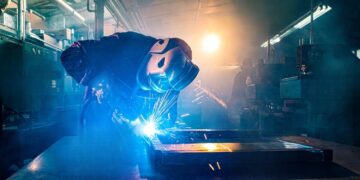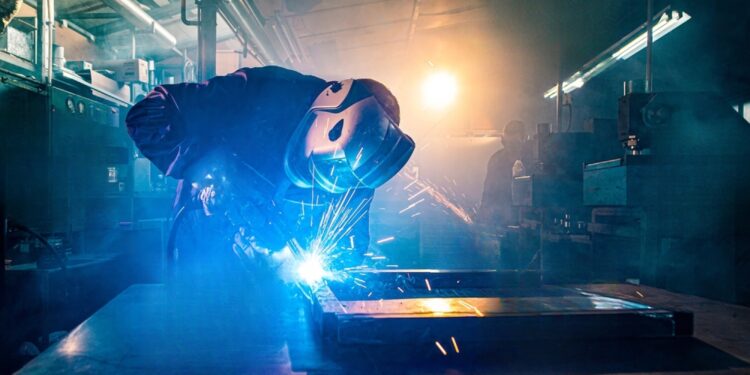In the ever-evolving realm of welding technology, friction welding machines have emerged as the avant-garde, rewriting the narrative of material joining. Far beyond a mere apparatus, these machines represent a symphony of precision, efficiency, and endurance, ushering in a new era in industrial welding. As we unravel the intricacies, diverse types, and far-reaching applications, it becomes evident that the impact of friction welding machines transcends the ordinary, breathing life into manufacturing processes in ways previously unimagined.
Delving into the Elegance of Friction Welding:
At its essence, friction welding is a dance – a choreography of controlled forces and heat generation. Distinct from the traditional welding methods reliant on melting and fusion, friction welding achieves its magic through the artful introduction of localized heat, forged by the friction between materials. As the interface temperature rises, applied pressure forges a weld that is not just strong but homogeneously seamless. This distinctive solid-state welding process stands as a testament to efficiency, precision, and durability.
A Symphony of Types Catering to Unique Needs:
1. Rotary Friction Welding Machines:
Picture a ballet where components gracefully rotate against each other, characterizing rotary friction welding. This type finds its muse in welding cylindrical parts, where the precision and speed of the dance result in a seamless fusion meeting the demands of various industries.
2. Linear Friction Welding Machines:
For larger and more intricate compositions, the linear friction welding performance takes center stage. With one component remaining stationary and the other engaged in a linear movement, this method harmoniously accommodates diverse industrial needs, delivering a symphony of strength and adaptability.
3. Inertia Friction Welding Machines:
Enter the grandeur of inertia friction welding, where a rotating flywheel stores kinetic energy, transferring it to workpieces to initiate welding. Particularly effective for larger components, this method orchestrates strong, high-quality welds, contributing to the overall efficiency of the manufacturing crescendo.
Applications Across Industries:
1. Automotive Overture:
The automotive industry becomes a canvas for the transformative power of friction welding machines. From engine components to transmission parts and drive shafts, these machines compose an efficiency and durability masterpiece. The high-strength welds sing in unison with optimal vehicle performance.
2. Aerospace Symphony:
In the aerospace sector, where every gram carries significance, friction welding machines play a pivotal role. Turbine blades, landing gear, and structural elements undergo a symphony of precision and reliability, meeting the stringent demands of this high-altitude industry.
3. Powering the Energy Sonata:
Power plants turn to friction welding for manufacturing critical components. Turbine shafts, generator parts, and other high-stress elements dance to the rhythm of robust and high-quality welds, enhancing the efficiency and longevity of power generation facilities.
4. Railway and Transportation Crescendo:
Friction welding composes a transportation sonata, ensuring the integrity of connections in rail tracks, wheel assemblies, and vital components. The efficiency and durability of this welding technique contribute to the safety and reliability of transportation infrastructure, orchestrating a smooth flow of goods and passengers.
Choosing Maestros for Friction Welding Machines:
Selecting a supplier for friction welding machines demands a keen ear for the symphony, ensuring a seamless integration of this advanced technology into industrial processes. Key considerations for finding the perfect maestro include:
1. Industry Reputation:
Like any maestro, a supplier’s reputation in the welding industry is crucial. A proven track record indicates reliability and adherence to industry standards, setting the stage for a harmonious partnership.
2. Technical Expertise:
Look for suppliers with a deep understanding of the symphony of friction welding. A thorough comprehension of the various machine types and their applications indicates a supplier’s ability to compose tailored solutions, playing in tune with unique industrial needs.
3. Certifications and Standards:
Verify that the supplier conducts their performance in harmony with industry certifications and standards. Compliance ensures that the machines are crafted to meet the required specifications and withstand the demands of industrial compositions.
4. Customization Options:
Opt for those friction welding machine suppliers who understand the nuances of your industrial composition, offering customization options. The ability to tailor machines to specific needs demonstrates flexibility and a commitment to creating a bespoke composition, perfectly in tune with customer expectations.
5. After-Sales Serenade:
Comprehensive after-sales support forms the coda of this symphony. Services such as maintenance, spare parts availability, and technical assistance contribute to the longevity and optimal performance of friction welding machines, ensuring the melody continues long after the initial crescendo.
6. Global Presence:
Consider suppliers whose melodies resonate globally, a network of satisfied customers. A widespread presence indicates successful performances in diverse industries and reliable international procurement, promising a harmonious collaboration.
In Conclusion:
Friction welding machines, the maestros of material joining, orchestrate a symphony of efficiency, precision, and durability. As businesses embrace this cutting-edge technology, the careful selection of reliable suppliers becomes paramount. The seamless fusion of advanced capabilities and trustworthy partnerships ensures that the potential of friction welding is fully realized, contributing to an enhanced composition of efficiency and reliability in manufacturing processes. As the symphony continues, the dance of friction welding machines reshapes industries, creating harmonies of innovation and progress.



















































